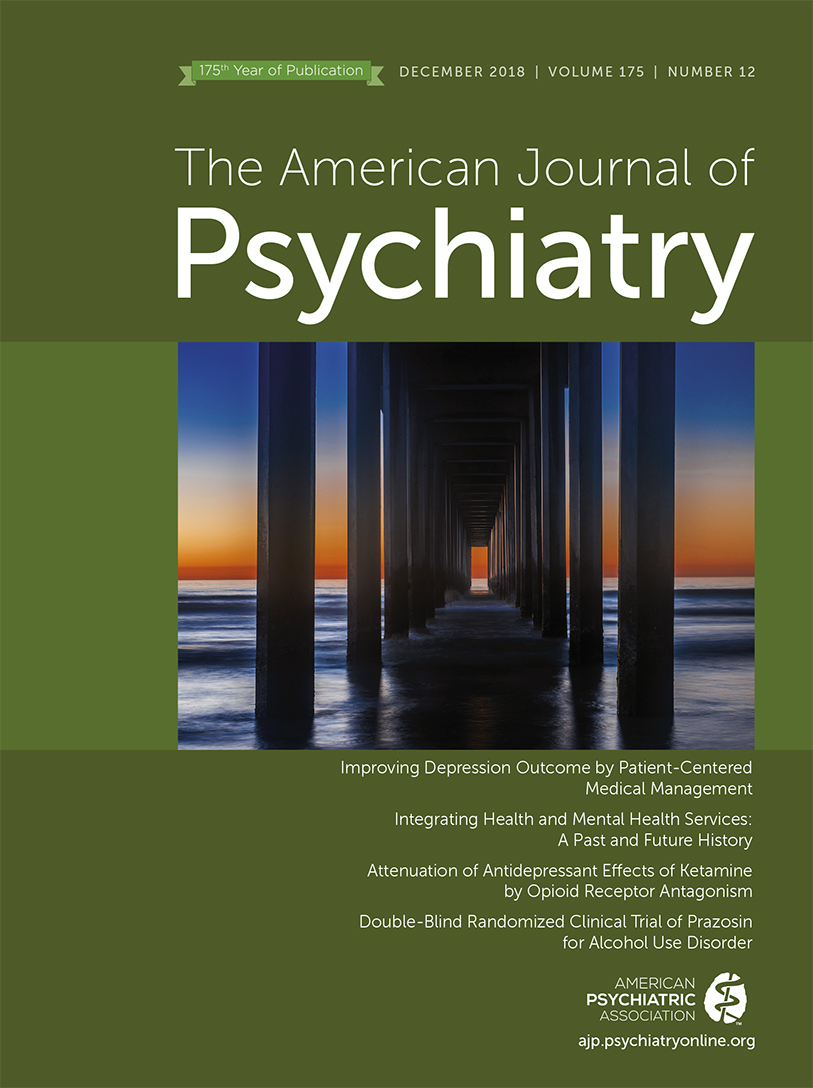Abstract
Objective:
In addition to N-methyl-d-aspartate receptor antagonism, ketamine produces opioid system activation. The objective of this study was to determine whether opioid receptor antagonism prior to administration of intravenous ketamine attenuates its acute antidepressant or dissociative effects.
Method:
In a proposed double-blind crossover study of 30 adults with treatment-resistant depression, the authors performed a planned interim analysis after studying 14 participants, 12 of whom completed both conditions in randomized order: placebo or 50 mg of naltrexone preceding intravenous infusion of 0.5 mg/kg of ketamine. Response was defined as a reduction ≥50% in score on the 17-item Hamilton Depression Rating Scale (HAM-D) score on postinfusion day 1.
Results:
In the interim analysis, seven of 12 adults with treatment-resistant depression met the response criterion during the ketamine plus placebo condition. Reductions in 6-item and 17-item HAM-D scores among participants in the ketamine plus naltrexone condition were significantly lower than those of participants in the ketamine plus placebo condition on postinfusion days 1 and 3. Secondary analysis of all participants who completed the placebo and naltrexone conditions, regardless of the robustness of response to ketamine, showed similar results. There were no differences in ketamine-induced dissociation between conditions. Because naltrexone dramatically blocked the antidepressant but not the dissociative effects of ketamine, the trial was halted at the interim analysis.
Conclusions:
The findings suggest that ketamine’s acute antidepressant effect requires opioid system activation. The dissociative effects of ketamine are not mediated by the opioid system, and they do not appear sufficient without the opioid effect to produce the acute antidepressant effects of ketamine in adults with treatment-resistant depression.



